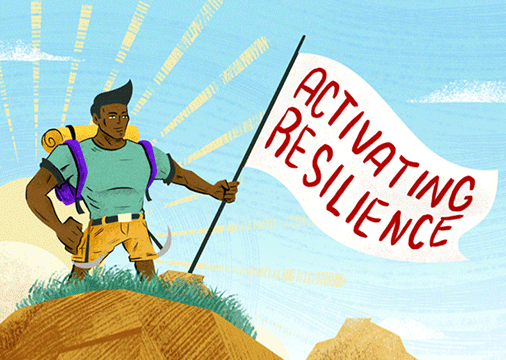Empirical and anecdotal evidence suggest many people are emotionally avoidant. What this means is that emotions such as anger, frustration, jealousy and bitter disappointment are avoided or suppressed. On the face of it, this strategy would seem to be a healthy one. Why on earth would we look anger straight in the eye and own it? Surely avoiding strong emotion – our own and those of others – is a sign of emotional health and psychological wellbeing. Unfortunately, like most things that keep us upright and engaged, for example a colonoscopy, broccoli or exercise, acknowledging difficult emotions is a prerequisite for a healthy life.
Avoiding emotion is like holding a large beach ball underwater. It consumes a lot of energy and focuses our attention on what’s happening beneath the waves, not what might be occurring around us: the scenery, our friends, a sunset or the azure sky. What’s interesting is if we release the ball, it doesn’t consume us and it can’t hurt us. It floats away, buoyed by the water. What’s important to realize is that emotions are energy and, like the beach ball, are constantly trying to reach the surface. When we suppress our emotions, one of two things will eventually happen. We turn these feelings on ourself and face a barrage of self criticism, or we turn them on others becoming a tyrant in traffic or prickly around co-workers or family. Initially these emotions will leak out in a trickle before becoming the equivalent of a fire hydrant of repressed emotion. Fortunately, there is another way.
To paraphrase Joseph Campbell, beneath the beach ball is our treasure – our inner pirate. The self who has emotional range and literacy. Who has swagger and is able to engage with difficult or strong emotion. Your inner pirate can read emotions like a map and realize they are telling us something about our own internal world and that of others around us.
Pushing Paper & The Man in the Hole
In case you don’t have a beach or a pool available, here’s a way you can replicate the beach ball as emotion exercise. Take a sheet of paper and write down any emotion or emotions you avoid or find really difficult to tolerate. Maybe it’s sadness or anger, jealousy or rage. Once you’ve written down your ‘tough’ emotions, hold the sheet of paper using both hands out in front of you and ‘push’ the paper as far away from you as you can. Stretch those arms as far as they can go. Now just hold it there. That’s emotional avoidance. It’s tiring and obscures all the other important or interesting things you might want to focus on, enjoy or be aware of. The irony of being emotionally avoidant is that we are joined at the hip with the very emotion we are trying to avoid. Therapist Steven Hayes tells a story that perfectly illustrates the paradox of emotional avoidance. A man falls into a hole with only a shovel to help dig him out. The moral of the story is that to escape, the man has to stop digging and drop the shovel. Only then can he clamber out. Similarly, the answers to pushing paper or restraining the beach ball? Put the paper on your lap and let it rest there. Let the beach ball surface and float away. Both of these choices mean our relationship with tough emotions changes. We are hard wired to fight our corner of flee the scene but by ‘pushing paper’ or releasing the beach ball, we have a new way of relating to emotions that hold us back, bring us down or make us feel ‘less than’. The emotions are still there, resting on our lap or floating on the ocean but we are not letting them control our agenda. Seeing our emotions in this way, as separate from us, means we can acknowledge what they may be trying to tell us. To have more self compassion or engage with life differently.
Today, let go of that beach ball, embrace your inner pirate and let your version of the Jolly Roger fly.



